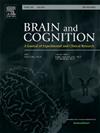效价在编码和回忆中的一致神经表征
IF 1.4
3区 心理学
Q3 NEUROSCIENCES
引用次数: 0
摘要
回忆是一种唤起与以前经历过的情绪相似的情绪的行为。与过去的经历不同,外部感官刺激触发情绪,回忆不需要外部感官刺激。这种差异与情感表征中的关键争论有关,即效价表征是跨模态(一般模态)一致还是依赖于模态(特定模态)。本研究旨在验证效价在编码和回忆之间的神经表征。利用电影观看和回忆的神经成像数据(Chen et al., 2017)和效价评分的行为数据(Kim et al., 2020),在电影观看和回忆之间进行了基于交叉参与者回归的解码的探照灯分析。采用多维尺度对探照灯分析结果进行验证分析。探照灯分析显示右侧颞中回和颞下回以及左侧梭状回。验证分析进一步显示价态在颞下回和左梭状回的神经表征具有显著的一致性。这项研究确定了在真实事件的编码和回忆之间,效价一致的大脑区域。通过比较先前很少使用的条件,这些发现有助于对情感表征的争论,表明下颞回与编码和回忆自然事件期间的价态表征有关。本文章由计算机程序翻译,如有差异,请以英文原文为准。
Consistent neural representation of valence in encoding and recall
Recall is an act of elicitation of emotions similar to those emotions previously experienced. Unlike the past experiences where external sensory stimuli triggered emotions, recall does not require external sensory stimuli. This difference is pertinent to the key debate in affective representation, addressing whether the representation of valence is consistent across modalities (modality-general) or dependent on modalities (modality-specific). This study aimed to verify neural representations of valence between encoding and recall. Using neuroimaging data from movie watching and recall (Chen et al., 2017) and behavioral data for valence ratings (Kim et al., 2020), a searchlight analysis was conducted with cross-participant regression-based decoding between movie watching and recall. Multidimensional scaling was employed as a validation analysis of the results from searchlight analysis. The searchlight analysis revealed the right middle temporal and inferior temporal gyrus as well as the left fusiform gyrus. The validation analysis further exhibited significant consistent neural representations of valence in the inferior temporal gyrus and the left fusiform gyrus. This study identified the brain regions where valence is consistently represented between encoding and recall about real events. These findings contribute to debate in affective representations, by comparing conditions utilized little in prior, suggesting the inferior temporal gyrus relates to representations of valence during encoding and recalling natural events.
求助全文
通过发布文献求助,成功后即可免费获取论文全文。
去求助
来源期刊

Brain and Cognition
医学-神经科学
CiteScore
4.60
自引率
0.00%
发文量
46
审稿时长
6 months
期刊介绍:
Brain and Cognition is a forum for the integration of the neurosciences and cognitive sciences. B&C publishes peer-reviewed research articles, theoretical papers, case histories that address important theoretical issues, and historical articles into the interaction between cognitive function and brain processes. The focus is on rigorous studies of an empirical or theoretical nature and which make an original contribution to our knowledge about the involvement of the nervous system in cognition. Coverage includes, but is not limited to memory, learning, emotion, perception, movement, music or praxis in relationship to brain structure or function. Published articles will typically address issues relating some aspect of cognitive function to its neurological substrates with clear theoretical import, formulating new hypotheses or refuting previously established hypotheses. Clinical papers are welcome if they raise issues of theoretical importance or concern and shed light on the interaction between brain function and cognitive function. We welcome review articles that clearly contribute a new perspective or integration, beyond summarizing the literature in the field; authors of review articles should make explicit where the contribution lies. We also welcome proposals for special issues on aspects of the relation between cognition and the structure and function of the nervous system. Such proposals can be made directly to the Editor-in-Chief from individuals interested in being guest editors for such collections.
 求助内容:
求助内容: 应助结果提醒方式:
应助结果提醒方式:


